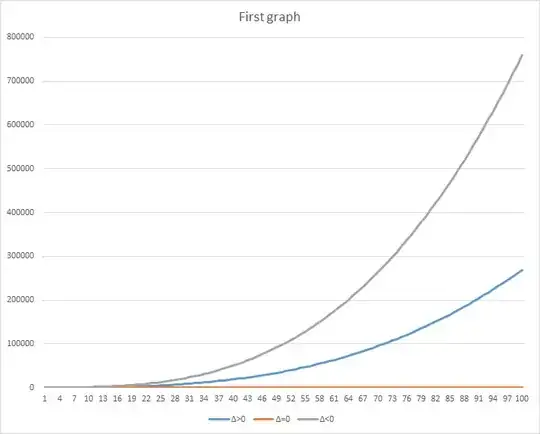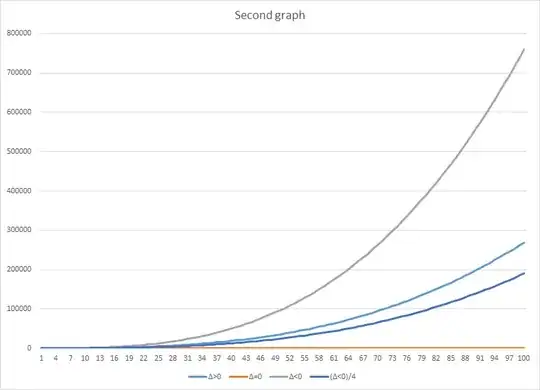Quadratic equation looks like that:
$$ax^2+bx+c=0$$
where $a\ne 0$. We can say something about roots when We compute a discriminant
$$\Delta=b^2-4ac$$
When $\Delta>0$ then We have two real roots, when $\Delta<0$, then two imaginary roots. Can We say enything about amount of thise equations in finite set of coefficients? E.g. when $a,b,c\in\{1,2,...,n\}$ then We have $n^3$ different equations. I prepared graphs when $a,b,c\in\{1,2,...,i\}$ and $i$ is on horizontal axis. On vertical axis there is amount of particular equations.
At the first I thought that this is because of asymmetric shape of formula for $\Delta$. $ac$ is multipled by $4$. When I divide amount of $\Delta<0$ equantions by $4$, then I got:

Is there any theorem or results about that? Maybe in countinuous sets We can say something about ratios?